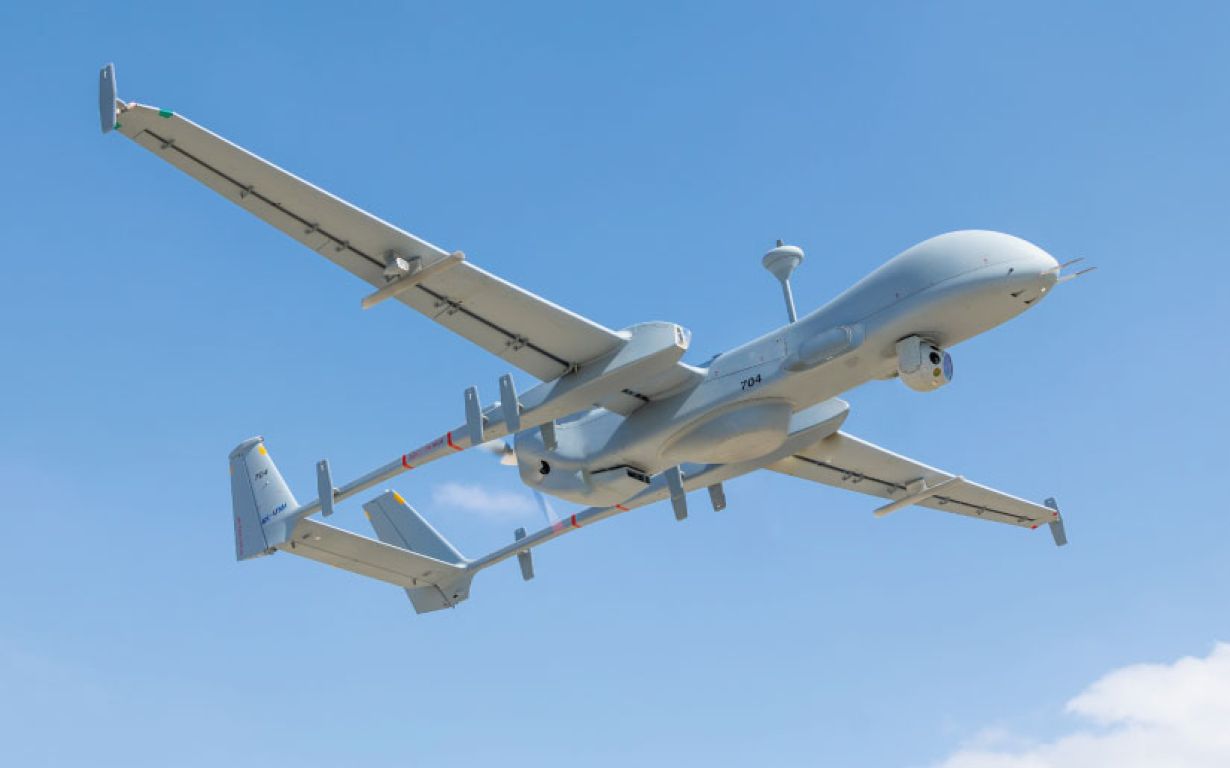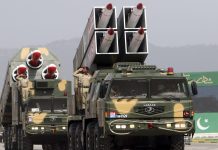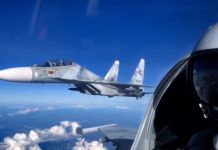Faced with a volatile security environment in the Indo-Pacific and a burgeoning military threat from China, Japan has decided to invest in an inexpensive and revolutionary technology that is dominating modern combat: drones.
Citing sources, The Mainichi reported that the Japanese Ministry of Defense (MoD) is mulling an allocation of more than 100 billion yen ($670 million) in the fiscal 2026 initial budget for the mass deployment of military drones. The Ministry could submit a budget request for the upcoming fiscal year, which begins in April, by the end of August.
The report stated that the Japanese government could purchase Turkish drones earlier used by Ukraine against Russian forces, so that they could be quickly delivered to the Japanese Self-Defense Forces. However, in the long run, the country wants to manufacture the drones domestically to ensure that there are no issues in the supply chain.
The report did not name the drone in question. However, Tokyo has been open about its admiration for Bayraktar TB2.
Earlier, for instance, a September 2022 report in the Japanese newspaper Yomiuri Shimbun stated that Tokyo was exploring the possibility of acquiring the Turkish TB2 and deploying them to safeguard the southern Ryukyu Islands, which are the closest to China.
More recently, a Japanese navy officer praised Turkey’s unmanned combat aerial vehicles (UCAVs), emphasizing their usefulness in intelligence, surveillance, and reconnaissance (ISR), a mission area he described as crucial for Japan amid current security challenges.
“ISR operations are very critical in Japan. The Japanese Maritime Self-Defense Force is now conducting ISR missions 24/7, every single day,” Japanese naval officer Iwade Yohei said at the IDEF 2025 defense industry exhibition in Istanbul. “So, I’m very interested in the Bayraktar UAVs made by Türkiye, and I would like to know the details.”
Tokyo has closely monitored Ukraine’s counter-offensive with drones to battle the Russian military. The nation’s defense ministry wants to deploy unmanned vehicles that aren’t simply for surveillance and intelligence gathering but can also be employed in actual warfare. The TB2 can essentially fulfil both these roles.
In addition to the TB2, Baykar has also produced cutting-edge drones like the Bayraktar Akinci and Bayraktar TB3, meant for short take-off and vertical landing (STOVL) platforms.
Japan believes swiftly acquiring and deploying such drones is essential to gaining the upper hand during combat while reducing human casualties.
Bayraktar TB-2 shot to fame in the September 2020 Nagorno-Karabakh War between Azerbaijan and Armenia, where it wreaked havoc on the Armenian troops. Later, the TB-2 drone’s combat performance in Ukraine also sparked international interest, and buyers quickly lined up to place orders.
The TB2 is a tactical unmanned aerial vehicle capable of performing missions related to armed attack and intelligence, surveillance, and reconnaissance (ISR). The UAV features an onboard avionic suite with a triple-redundant avionic system, which enables fully autonomous taxiing, takeoff, landing, and cruising.
Baykar has also upgraded the TB2 drone to add more teeth to its combat capability. The manufacturer earlier showed off a new, next-generation variant of the drone, the TB-2T AI, which comes equipped with a turbo engine and advanced artificial intelligence.
Baykar says that the new TB-2T AI drone will shift the balance of power on the battlefield. The drone boasts superior altitude, high speed, and AI-powered smart flight capabilities.
With its turbo engine, the Bayraktar TB2T-AI can reach elevations of over 30,000 feet in less than half an hour. Notably, the next-generation drone broke its altitude record during test flights in Keşan, reaching 30,318 feet, as previously reported in detail by the EurAsian Times.
This is a significant improvement over the previous TB2, which has an operational altitude of 16,000 feet. Japan could opt to buy the upgraded drones.
Besides the Baykar family of drones, Japan has also shown interest in the STM kamikaze UAVs. STM earlier indicated that Japan was showing interest in a quadcopter-type series of loitering munitions.
STM’s General Manager, Özgür Güleryüz, said, “Japan has requested Kargu. We’ve shown Kargu several times at exhibitions in Japan.” He added that the Kargu drone, in service with 10 countries, had proven itself in tests and the field.

The Kargu is a rotary-wing attack drone loitering munition system designed for anti-terrorist operations and asymmetric warfare.
These claims could not be verified, and the EurAsian Times awaits official information from the Japanese Ministry of Defense.
Meanwhile, Japan has also shown interest in another combat drone that has proven its mettle in combat: the Israeli Heron II.
Japan Is Exploring Heron Purchase
The Japanese military has also been considering the purchase of the Israeli-made Heron-2 drone, as reported by The Jerusalem Post.
An Israeli Heron-2 drone was recently photographed in Japan, featuring an Israeli registration number and stickers from Kawasaki Heavy Industries, which has signed a collaboration with Israel Aerospace Industries (IAI), the manufacturer of Heron-2.
The report said that this is the first time that an Israeli drone was tested in the Asian country. The drone was configured for electronic warfare.
If Japan goes ahead with the purchase of this drone, it will become the second country after India to buy the Heron-2 to combat the security threat posed by China.
Earlier, the Indian Air Force (IAF) and the Indian Army (IA) ordered 10 Heron Mk2 drones from IAI in early 2021 under emergency procurement power granted to the armed forces following the PLA’s incursion across the LAC into India-claimed territory starting February 2020.
Heron-2 is a medium-sized drone with a fairly long endurance. Developed for the Israeli Air Force, the Heron-2 is also used for strike and reconnaissance missions. It was recently deployed for operations in Iran.

Fitted with a Rotax 916 iS engine, the Heron-2 can reach an altitude of 35,000 feet, a maximum speed of 140 knots, and remain in the air for 45 consecutive hours. Due to improved manufacturing technologies, this drone has a broader and stronger body structure, allowing quick and easy maintenance without adding weight.
The Heron 2 features better radio, radar, and optical sensors, giving it better stand-off capability than its predecessor. It can look and listen deep into adversary territory without crossing the border or putting itself in harm’s way of adversary air defenses. This should help Japan in potential operations against China, which has a formidable Anti-Access/Area Denial (A2/AD) system in place along its coastline.
Should Japan choose to purchase the Heron-2, Kawasaki will likely produce the drones for the domestic market.
However, the EurAsian Times understands that it may be too soon to say whether Japan will choose between the Turkish and Israeli drones, or acquire a combination of both.
Japan Is Turning To Drones For Future Warfare
Japan’s drone acquisition program is a key component of its defense modernization strategy, driven by regional security threats. The country is focusing on acquiring unmanned aerial vehicles (UAVs) to enhance intelligence, surveillance, reconnaissance (ISR), and strike capabilities, particularly for maritime and territorial defense from China.
Japan warned of China’s swift escalation of military operations from its southwestern shores to the Pacific, calling the actions the most strategic challenge in its latest defense report released in July 2025. “The international society is in a new crisis era as it faces the biggest challenges since the end of World War II,” the report said.
The nation’s Defense Buildup Program, drafted in 2022, emphasized the utility of drones in modern warfare. The program stated that the SDF will “expeditiously procure various types of unmanned assets” to “accomplish missions while minimizing human loss.”
The Japanese Defense Ministry established a drone task force in April 2025 to explore the use of drones in future combat.
According to reports, it will likely request the budget for the next fiscal year, starting from April, by the end of this month. The country will follow the policy of “preferring quantity to quality’ and explore a strategy of establishing superiority with the number of drones, a senior government official told Mainichi.
Japan’s acquisitions are motivated by North Korea’s missile advancements, China’s growing maritime assertiveness in the East China Sea, and Russia’s incursions near its airspace. Drones are seen as critical for persistent ISR, maritime domain awareness, and deterrence along Japan’s extensive island chains, particularly the Ryukyu or Nansei Islands.
The current fiscal 2025 budget included 3.2 billion yen for small offensive drones and 41.5 billion yen for the deployment of the US-made large drone MQ-9B SeaGuardian for improved surveillance operations, as also noted by the EurAsian Times earlier.
These acquisitions come as China’s military activities in the airspace and waters surrounding Japan are becoming more intense, with several Japanese lawmakers suggesting that Tokyo use drones to intercept such illegal flights and monitor Chinese military activity in the region.
- Contact the author at sakshi.tiwari9555 (at) gmail.com
- Follow EurAsian Times on Google News




